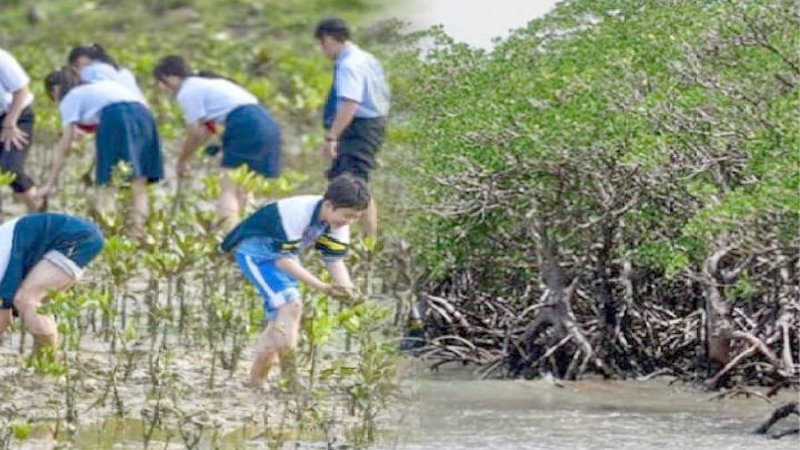Mangroves are exceptional carbon sinks, according to the IUCN, with a three to five times greater capacity for carbon storage than tropical forests.
As the South China Sea Institute of Oceanology of the Chinese Academy of Sciences (SCSIO) has made progress with the construction of the mangrove biodiversity and mangrove restoration demonstration zones in Pakistan, Balochistan’s Sonmiani Marsh Dam region has successfully restored a 16-acre mangrove forest.
The Lasbela University of Agriculture, Water, and Marine Sciences (LUAWMS) in Pakistan is a partner in the project, which is titled “Database Construction of Mangrove Biodiversity in South Asia and Southeast Asia and Construction of Anti-Pollution Ecological Restoration Demonstration Zones.” SCSIO is the project’s project manager.
As part of this project, the research team applied the mangrove anti-pollution ecological restoration afforestation technology to repair Pakistan’s damaged coastal wetlands using the R&D technology of the Chinese Academy of Sciences.
In the Sonmiani Marsh Dam area, the Pakistani side completed over 16 acres of mangrove forest of anti-pollution ecological restoration demonstration zones, effectively promoting the preservation and growth of nearby mangroves. As one of the most productive and diverse ecosystems on Earth, mangroves are essential to preventing floods, which, in the absence of them, would affect 39% more people annually.
Mangroves are exceptional carbon sinks, according to the International Union for Conservation of Nature (IUCN), with a three to five times greater capacity for carbon storage than tropical forests. Additionally, they support more than 120 million people’s livelihoods worldwide and house more than 3,000 different fish species.
Sindh and Balochistan, Pakistan’s two coastal states, are blessed with distinctive coastal ecosystems that have a significant capacity for capturing and retaining significant amounts of carbon dioxide (CO2).
The Marine Science School of LUAWMS conducted a mangrove planting project and a community engagement activity for fishermen in the Sonmiani Marsh Dam region of Balochistan using the technologies made available by SCSIO.
During the interaction event, Professor Mohammad Baloch, Lasbela University’s executive vice president, and students from the Marine Science School spoke with local fishermen about their livelihoods. According to Professor Mohammad Baloch, mangroves serve as a natural barrier against natural disasters as well as a source of fuelwood, forage for herd animals, and livelihoods based on fishing.
